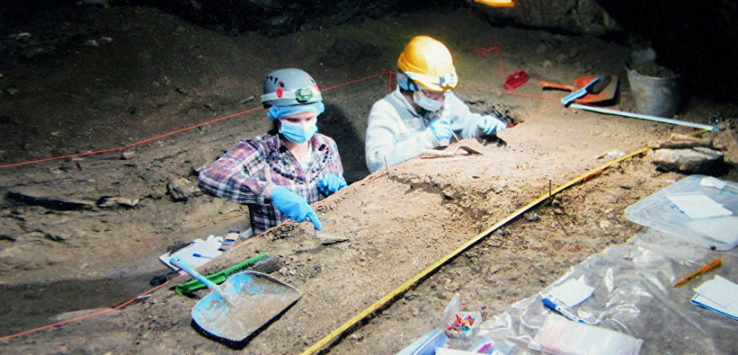
DNA from a 7 thousand year old tooth found in a Cave in Artsakh perfectly matches with modern Armenians

Some 6 months ago I’ve posted about a fundraiser on INDIGOGO for an exciting new paleontological exploration of a prehistoric cave in Artsakh (Nagorno Karabakh) conducted by an international team of scholars led by Prof. Levon Yepiskoposyan, head of Ethnogenomics laboratory Institute of Molecular Biology (read more about it here). They succeeded in raising some funds and the team was able to proceed with the expedition. Their first exciting results are now being reported.
Scholars from Britain, US, Denmark and Armenia led by Prof. Levon Yepiskoposyan have been examining prehistoric caves near the village of Azokh in Artsakh (Nagorno Karabakh) and found unique artifacts from different periods, among them a tooth from a human who lived 7000 years ago. Due to the cave’s climate DNA was preserved inside the tooth and was send to Copenhagen University’s genetics department (in Denmark) for examination. The results of this inquiry have revealed that the genetic makeup of the tooth belonging to an individual 7000 years ago perfectly matches with the genetic makeup of modern Armenians.
“This is the conclusion we’ve reached after numerous excavations carried out on the territory of Karabakh, where we examined more than a dozen caves, among them the cave of Azokh and Alexan Uzes,” Yepiskoposyan said.

The caves near the village of Azokh are a unique site that have preserved organic traces from various periods of our history. Since the excavations at Azokh started in 2002, the team led by Dr. Tania King (Blanford Museum, UK) has uncovered hundreds, if not thousands, of bones of the giant and now extinct cave bear (Ursus speleaus). In addition to countless remains of mammals archaeologists have now found evidence for three different species of hominin – Homo heidelbergensis, Homo neanderthalensis, and Homo sapiens. The fossil records are exceptionally rich and demonstrate that paleontological data alone from Alexan Uze cave could define the cave as a regionally important scientific discovery. You can read more about the Azokh cave complex in the book titled: Azokh Cave and the Transcaucasian Corridor (2016).
The human tooth was discovered in the Alexan Uzes cave which preserved human DNA. Referring to this cave Yepiskoposyan added that:
“Here we found a tooth of a human who lived on the territory of Karabakh, about seven thousand years ago. DNA can be preserved in teeth for very long periods of time, as we know.”
Then he continued, “As a result, it was found that the genes of our distant ancestors corresponds with those of modern Armenians.”

That Armenians are no migrants but constitute an indigenous population of the Armenian Highlands has already been established by countless previous genetic studies.
These findings therefore again corroborates with the previous studies and confirms that Armenians are an indigenous people who have occupied their territory for thousands of years.























